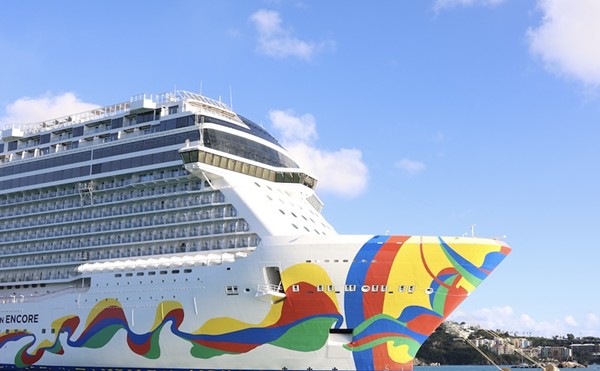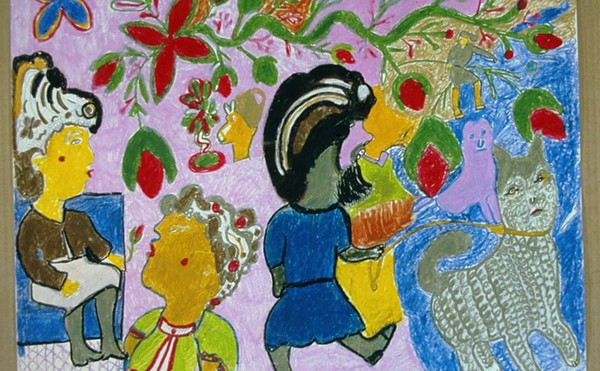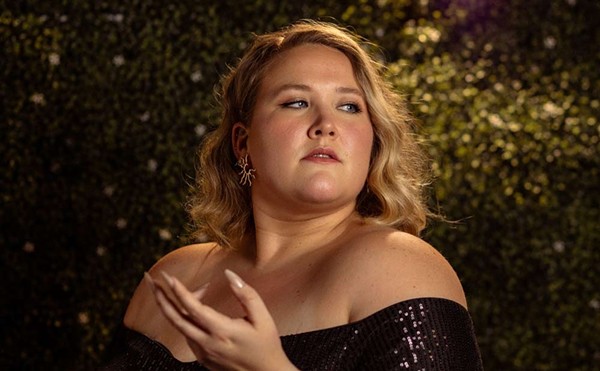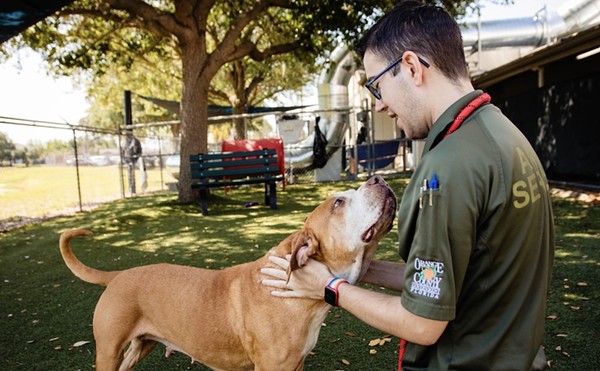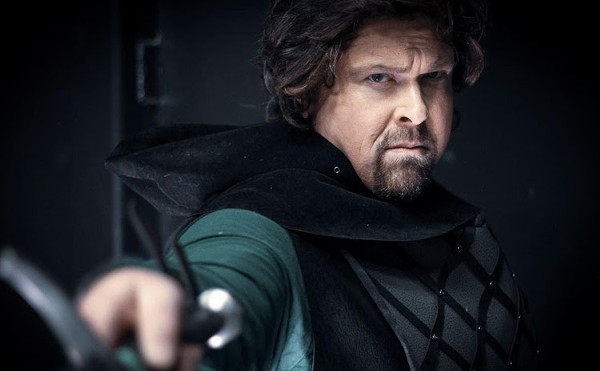FRACTURED NARRATIVES: A STRATEGY TO ENGAGE
through Jan. 4, 2015 | Cornell Museum of Fine Arts, Rollins College, 1000 Holt Ave., Winter Park | 407-646-2656 | cfam.rollins.edu | free
It’s tough getting through to people, you know? The thick carapace we’ve grown to protect us from our kinetic, nanosecond-attention-span lifestyle is also filtering out important stuff, so it’s got to leak in through unexpected crevices, seep through the cracks in your force field. And that’s exactly what will happen to you when you enter the Cornell Fine Arts Museum this fall. Fractured Narratives: A Strategy to Engage is as close to a blockbuster show as Central Florida has had in a long, long time – this is a show that needs to be seen, at least once, if you want to say that you care.
Barbara and Ted Alfond, Rollins alumni and contemporary art collectors, gifted 120 artworks to the Cornell Fine Arts Museum, and this exhibit, curated by CFAM’s Amy Galpin and independent curator Abigail Ross Goodman, is the first show to both draw from and be inspired by that collection. (Many pieces from the Alfond Collection are displayed at their namesake hotel at 300 E. New England Drive.) Fractured Narratives packs four videos, an installation and varied works by some of today’s leading contemporary artists into a small space. If anything, it’s too much for one viewing.
Messages are overlaid on each other, with powerful themes: war, violence, oppression, censorship, environmental change, self-identity and accountability. Without resorting to shock and provocation, the art slips into the viewer’s heart and mind, leaving a trail of disturbance.
Amar Kanwar’s “Listening Bench #1” is a seating device made of reclaimed wood that is wired to tell a story about the Counting Sisters, who count the dead and are thrown in jail for political reasons. (Apparently they counted the wrong dead.) This unsettling start is immediately amped up by Alfredo Jaar’s video Muxima, comprising short scenes shot in Angola. While versions of a pre-colonial folk song lilt in the ear, Angolans are seen dealing with land mines, AIDS and class struggle; Africa’s romantic past and horrific present are sliced into a frisson of rising anxiety.
In the next room, artists from around the world kick the viewer into a higher state of alert with statements about oppression and fear. There is something about Eric Gottesman’s video “Oromaye,” in which an actor’s bushy hair is trimmed into a neat Western buzz cut while he reads from Ethiopian journalist Baalu Girma’s controversial 1984 novel, Oromaye, that begs repeated viewings. It’s epigrammatic of our transformation – we must shed our 20th-century sentimentality and connection to the past, and embrace today’s slicker world … mustn’t we?
In this room, Brazilian artist Rivane Neuenschwander designed an installation called “Zé Carioca and Friends: O Saci,” a series of colorful rectangles topped with empty speech bubbles, abstracted from the mildly racist Disney character. (The panels correlate to panels of the Zé Carioca comic book, with the stereotype-ridden characters removed.) If you want, you can be one of those friends and write in the bubbles with provided chalk. So far, Central Florida’s pathetic contributions include the messages “Minecraft” and “I Love Disney,” so as the exhibit progresses, let’s hope that we step up to the plate here. There are erasers; don’t be afraid to use ’em.
Apartheid, torture, oppression … if these themes don’t shock the viewer out of his Starbucks-induced stupor, then he’s ready for Omer Fast’s video, “5000 Feet Is the Best.” It’s fiction, but it is based upon fact, and yes, it is exactly what you dread. A veteran drone pilot is interviewed in mock-exposé format to examine the life of someone who becomes adept at killing from a distance. He rationalizes it at one point: “I tried to hit the truck without hitting the surrounding buildings … if it wasn’t me, some new kid would be doing it worse.” Some excuse. Watch the video and look for the license plate on the car that was destroyed – these could be closer than you think.
These stories are truly fractured; the show deliberately slices and mixes narratives without sugarcoating or stitching them together. When you visit a museum, you let your guard down, just for a moment, because you know they aren’t trying to sell you stuff, and that is how Fractured Narratives fishhooks into your brain. By then it’s too late, and your emotions, perhaps for the first time in a long time, may respond honestly to the horrors and moral ambiguities of the 21st century. Art, with its power to engage, allows you some freedom to think. And, pal, it doesn’t cost you a dime.




